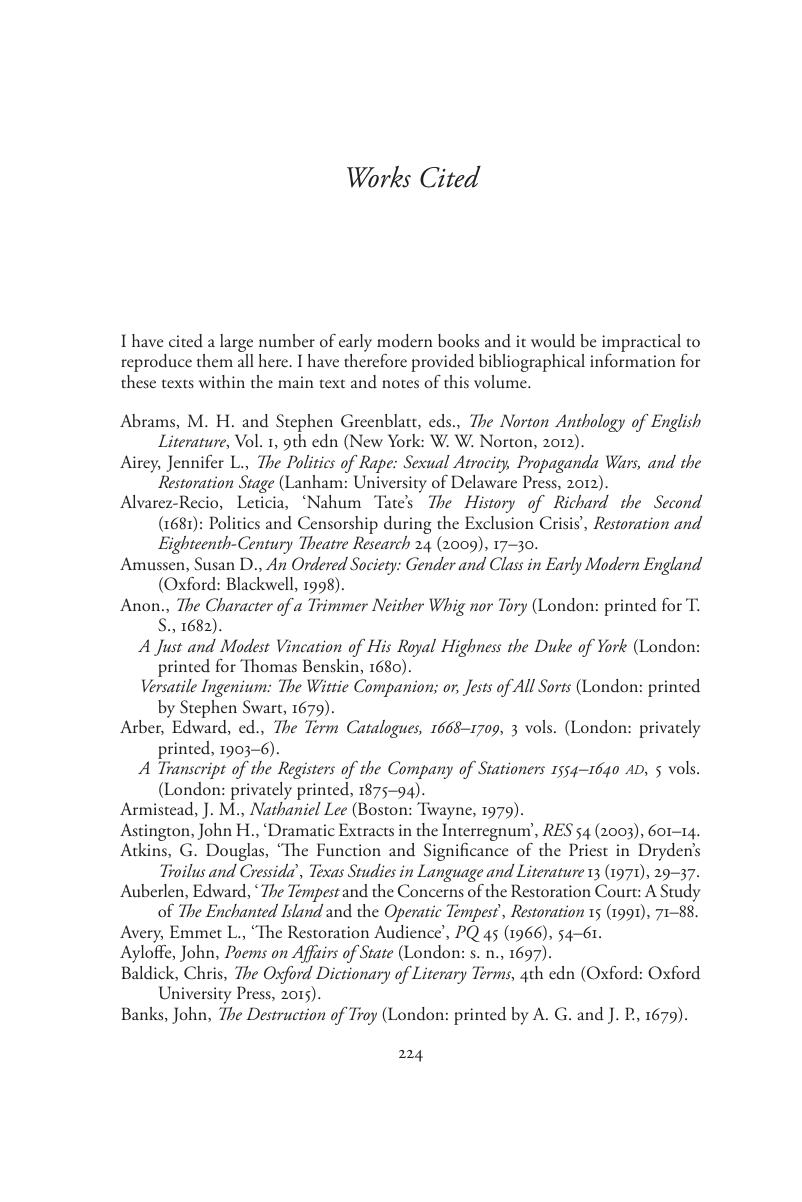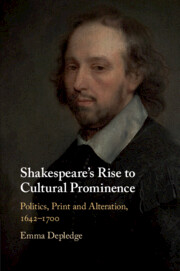Book contents
- Shakespeare’s Rise to Cultural Prominence
- Shakespeare’s Rise to Cultural Prominence
- Copyright page
- Dedication
- Contents
- Illustrations
- Tables
- Acknowledgements
- Note on Terminology and List of Abbreviations
- Introduction
- Chapter 1 Shakespeare in the Civil War and Interregnum Years, 1642–1659
- Chapter 2 Shakespeare on the Early Restoration Stage and Page, 1660–1677
- Chapter 3 Shakespeare and the Exclusion Crisis, 1678–1682
- Chapter 4 The Politics of Shakespeare Alterations of the Exclusion Crisis
- Chapter 5 Selling Shakespeare on the Exclusion Crisis Stage and Page
- Chapter 6 Shakespeare in the Wake of the Exclusion Crisis, 1683–1700
- Notes
- Works Cited
- Index
- References
Works Cited
Published online by Cambridge University Press: 02 July 2018
- Shakespeare’s Rise to Cultural Prominence
- Shakespeare’s Rise to Cultural Prominence
- Copyright page
- Dedication
- Contents
- Illustrations
- Tables
- Acknowledgements
- Note on Terminology and List of Abbreviations
- Introduction
- Chapter 1 Shakespeare in the Civil War and Interregnum Years, 1642–1659
- Chapter 2 Shakespeare on the Early Restoration Stage and Page, 1660–1677
- Chapter 3 Shakespeare and the Exclusion Crisis, 1678–1682
- Chapter 4 The Politics of Shakespeare Alterations of the Exclusion Crisis
- Chapter 5 Selling Shakespeare on the Exclusion Crisis Stage and Page
- Chapter 6 Shakespeare in the Wake of the Exclusion Crisis, 1683–1700
- Notes
- Works Cited
- Index
- References
Summary

- Type
- Chapter
- Information
- Shakespeare's Rise to Cultural ProminencePolitics, Print and Alteration, 1642–1700, pp. 224 - 246Publisher: Cambridge University PressPrint publication year: 2018

